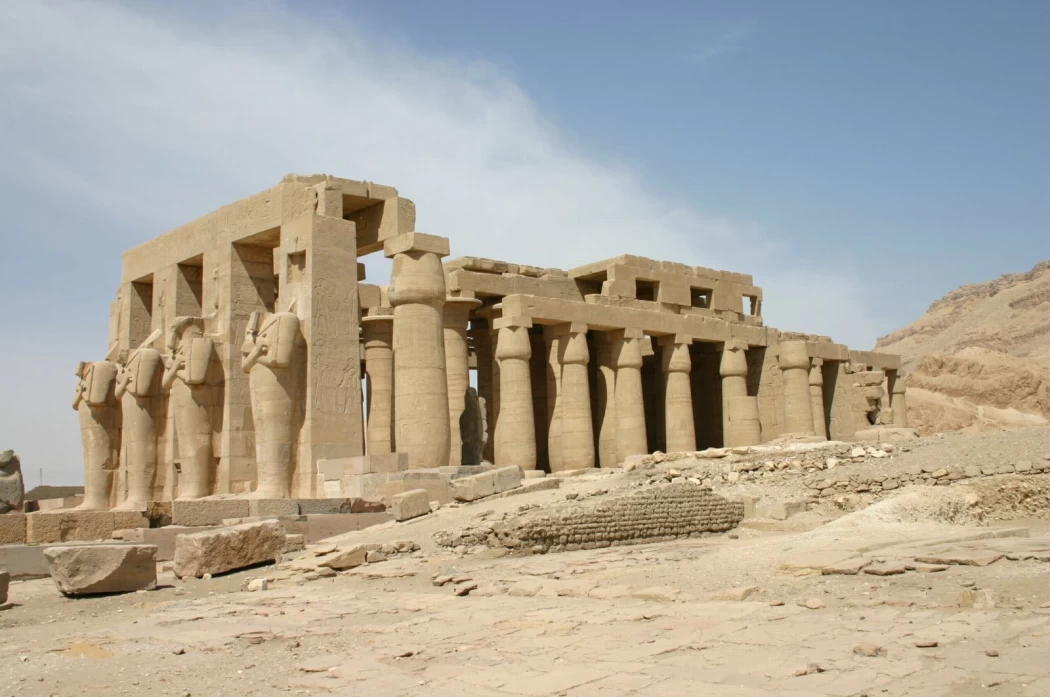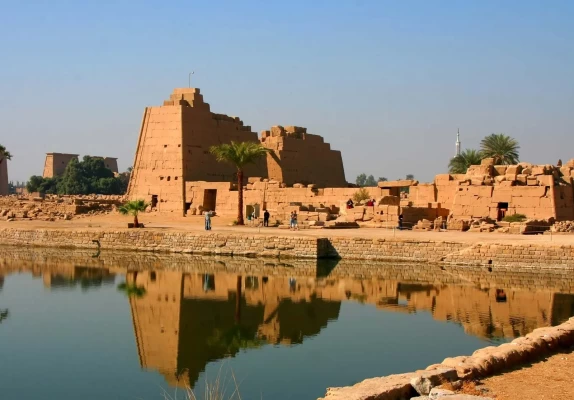
The Ramesseum in Luxor
This temple could be the most beautiful embodiment of the nickname of Luxor, "the largest open-air museum in the world". The Temple of Luxor is located in the middle of the modern city, which is built on the site of the ancient capital of ancient Egypt, Thebes.
The Temple is one of the best preserved of all ancient monuments, with many structures, statues and carved reliefs still intact, making the temple one of the most remarkable visits in all of Egypt. The juxtaposition with its modern decor significantly enriches its look. The modern city begins on one side of the temple, on the other, the Nile flows slowly. There is little place in Egypt where one can be so immediately transported into the extraordinary and long history of Egypt.
Ramses II, is the third pharaoh of the XIXth dynasty. He reigned 66 years from 1279 to 1213. The ancient Egyptians called him "Son of the Sun God", since he ascended to the throne at the beginning of his 20 years.
Ramses II is a great builder:
- Ramses II’s most famous buildings are the facades of the temples of Abu Simbel, built for his worship as well as that of the Egyptian gods and his wife Nefertari north of Lake Nasser on the Nile about seventy kilometers from the second cataract of the Nile.
- The Ramesseum, its funerary temple, opposite Luxor, which includes two pylons preceding two porticos and a large hypostyle hall.
Later, his successors were busy continuing the project. Thus, throughout their reigns, the pharaohs Tutankhamun, Horemheb and Ramses II undertook various works within the temple, ranging from embellishment to enlargement.
In the north-eastern part of this temple is currently the mosque of Abu El Hagag. The other parts of the temple were built under the reign of Amenemhat III There is first a room with huge columns, subdivided into two rows, then the large open courtyard surrounded by two rows of columns and finally the room with 32 columns. Inside the temple is the sacred ship room.
Alexander the Great built a small kiosk bearing his name inside that of Amenhotep III. Finally we arrive at the holy of holies and the sacred statue chamber which contains 4 columns. Located between the two temples of Luxor and Karnak, it includes a large collection of pharaonic remains discovered in the city of Luxor and surrounding areas.
















